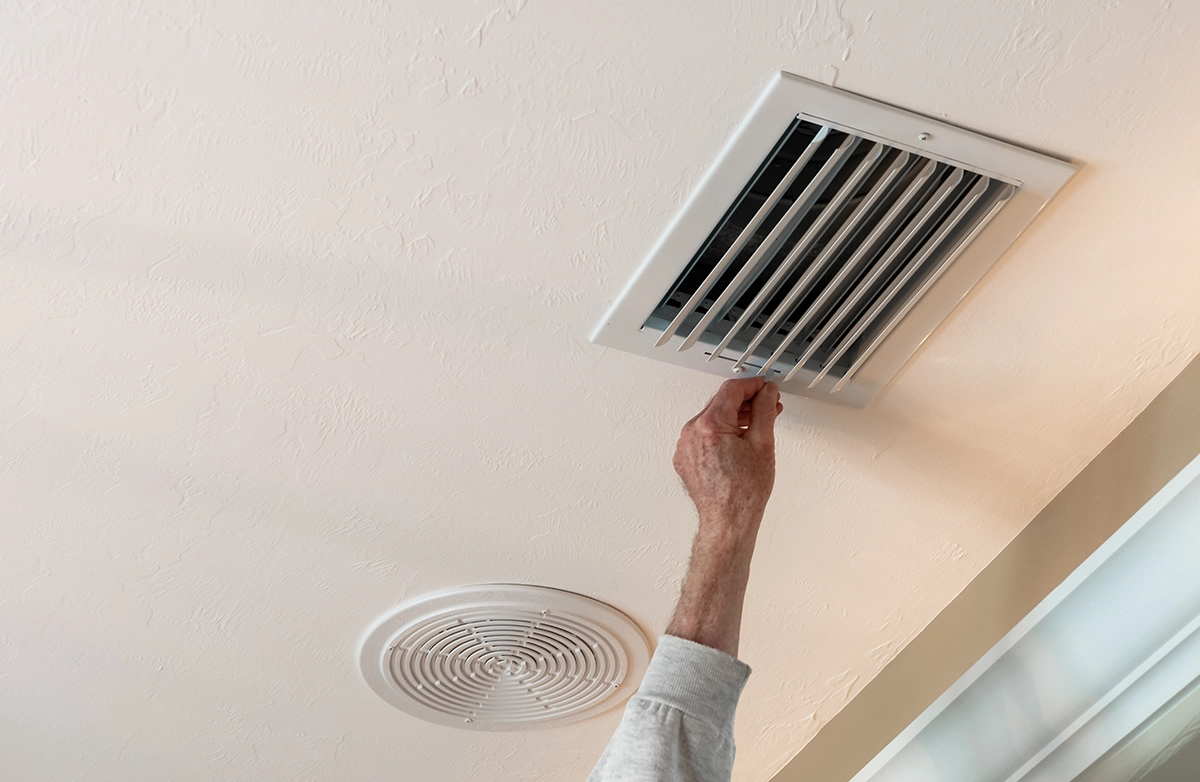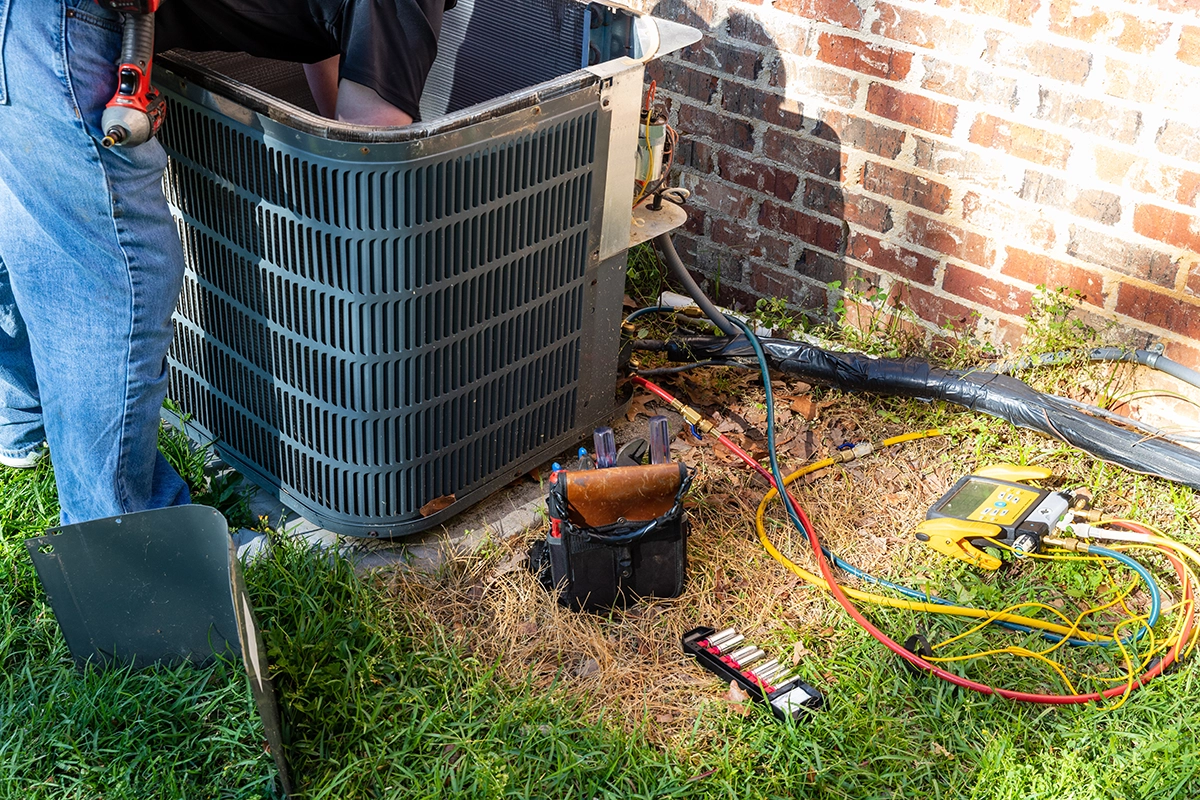If you’re upgrading your HVAC system or trying to balance airflow, you might wonder: how many CFM does a 1.5 ton heat pump produce? It’s a common and important question—especially when airflow impacts comfort, efficiency, and system longevity. At Good Hope Air Conditioning & Heating, we get this one a lot, and it’s a great starting point for anyone sizing ductwork or checking performance.
Let’s break it down clearly, so you walk away understanding not just the number, but why it matters.
What Is CFM and Why Should You Care?
CFM stands for Cubic Feet per Minute. It’s the measurement of how much air is moving through your HVAC system every minute. Think of it as your system’s “breathing rate.”
If airflow is too low, your home may feel stuffy or unevenly cooled. On the other hand, if it’s too high, the system can become noisy, inefficient, or even prone to short cycling. So, getting the CFM just right is essential.
How Many CFM Does a 1.5 Ton Heat Pump Produce?
Here’s the short answer: typically between 600 and 700 CFM.
Most HVAC systems follow a general rule of thumb—400 CFM per ton of cooling. So for a 1.5-ton unit:
-
1.5 tons × 400 CFM = 600 CFM
But in real-world applications, that number might rise to 650 or even 700 CFM, depending on the climate, ductwork design, and system tuning.
💡 Energy.gov confirms this airflow estimate is standard across properly designed systems.
Why the “Right” CFM Range Isn’t Always Exact
Now, you might be thinking—if 600 CFM is the target, why the flexibility?
That’s because airflow requirements can vary based on several key factors:
-
Humidity control: Higher humidity might call for slightly lower CFM to allow better dehumidification.
-
Duct system design: Long or complex duct runs may require airflow adjustments.
-
Filter resistance: High-MERV filters can reduce airflow and need compensation.
-
Altitude: Higher elevations mean thinner air, so systems may be set to higher CFM.
At Good Hope Air Conditioning & Heating, we always consider these details before dialing in airflow. It’s never one-size-fits-all.
Common Symptoms of Incorrect Airflow
If your system’s CFM isn’t set properly, your comfort and efficiency take a hit. Here’s what to watch for:
-
Rooms that are too hot or too cold
-
Weak air coming from vents
-
Frequent system cycling
-
Higher energy bills
-
Ice buildup on refrigerant lines
These issues may not always be airflow-related—but airflow is often a contributing factor.
How to Measure CFM Accurately
If you’re serious about answering “how many CFM does a 1.5 ton heat pump produce” in your specific home, measurement matters. Here are the most common methods:
-
Anemometers: Measure air velocity at supply registers
-
Flow hoods: Provide precise CFM readings at vents
-
Static pressure readings + fan tables: A pro-level way to estimate airflow using system specs
While DIY tools can give ballpark figures, it’s best to bring in a professional to ensure accuracy. At Good Hope, we use calibrated instruments and balance airflow as part of our comprehensive system checkups.
Can Duct Size Affect How Many CFM a 1.5 Ton Heat Pump Produces?
Absolutely. Even the most efficient system can struggle if it’s paired with the wrong ductwork.
-
Undersized ducts: Restrict airflow and lead to overheating or freezing coils.
-
Oversized ducts: Reduce air velocity, resulting in poor air distribution.
According to best practices from the U.S. Department of Energy, around 400 CFM per ton is typical—and anything below 350 CFM per ton can impair performance.
According to airflow best practices outlined in Energy Vanguard’s guide on duct sizing, airflow and duct sizing must be calculated together—not guessed. It’s why we always assess ductwork when installing or replacing heat pumps.
For further engineering context, McGill AirFlow offers free previews and design data on friction, static pressure, and duct dimensions.
Adjusting CFM to Match Your Home’s Needs
You’re not stuck with default settings. HVAC systems allow for adjustments through:
-
Blower speed settings
-
ECM (electronically commutated motor) programming
-
Zoning systems and dampers
If you suspect your airflow is off, we can evaluate and fine-tune it. Even a minor adjustment can improve comfort and energy efficiency.
Does SEER or Efficiency Rating Affect CFM?
While SEER ratings measure efficiency, they don’t directly determine airflow. However, higher-SEER systems often include variable-speed blowers, which adjust CFM based on conditions. This helps maintain consistent temperatures and humidity levels while reducing energy use.
Good Hope Air Conditioning & Heating regularly installs high-efficiency, variable-speed heat pumps that automatically optimize CFM. It’s one of the reasons homeowners choose us for expert upgrades.
CFM Guidelines for Other Heat Pump Sizes

| Heat Pump Size | Typical CFM Range |
|---|---|
| 1.0 Ton | 400–450 CFM |
| 1.5 Ton | 600–700 CFM |
| 2.0 Ton | 800–900 CFM |
| 2.5 Ton | 1000–1100 CFM |
| 3.0 Ton | 1200 CFM |
These are general ranges. Actual airflow should always be customized.
Final Thoughts: How Many CFM Does a 1.5 Ton Heat Pump Produce?
So, how many CFM does a 1.5 ton heat pump produce? The most accurate answer is between 600 and 700 CFM, depending on system specs and conditions. But airflow isn’t just about hitting a number—it’s about fine-tuning comfort, efficiency, and performance in your space.
At Good Hope Air Conditioning & Heating, we believe airflow should never be a guessing game. Our trained technicians carefully calculate and verify airflow during every install and service visit. If you’re unsure whether your system is breathing the way it should, we’re here to help.
📍 Based in Riverside, CA, we serve both local and regional customers with precision HVAC service. But no matter where you are, the right airflow starts with the right answers.
If you’re in Riverside or one of our surrounding service areas, we’re here to help. Whether you’re dealing with airflow issues or considering a system upgrade, contact Good Hope Air Conditioning & Heating to get it done right.




